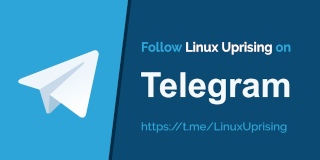Free Painting Software Krita 4.1.0 Released With New Reference Images Tool, Option To Save And Load Sessions, More
Krita, the free and open source raster / vector graphics editor, was updated to version 4.1. The new release includes major new features like a new reference images tool, option to save and load sessions, multi-monitor workspace layouts, among others.
Krita is primarily aimed at concept art, illustrations, as well as the VFX industry. The application is developed using Qt 5 and the KDE Frameworks 5, and runs on Linux, Windows, and macOS.
One of the most important changes in Krita 4.1.0 is the reference images tool, which is back, now "more powerful than ever". Using it, you can add multiple images at once, as well as perform actions on multiple images like moving images around or outside the canvas, scale and rotate, or change the opacity and saturation.
This video presents the new reference images tool from Krita 4.1.0:
Another important change is the addition of sessions and window layouts.
The application already had workspaces, but they had the limitation of working on a per-window basis. With the latest Krita 4.1, your sessions are remembered, meaning open windows and documents are automatically restored so you can pick up from where you left off. You can also manually load a previous session.
As for the new window layouts feature, this is similar to the workspaces feature, but it allows storing multiple windows and their layouts (sizes, positions on the screen, etc.), being especially useful if you use multiple monitors.
There are quite a few other improvements in Krita 4.1.0, including:
- More frame management options with animation: moving frames, adding frames, copying frames, and setting he playback time
- The app can now handle larger animations better by offloading the data to disk instead of keeping all rendered frames in memory
- Improved animation timeline display (it's now easier to see how long a single frame is running and if a frame is empty)
- Improved color picking: you can now pick a small amount of color to mix it with your existing color
- Improved vanishing point assistants and custom colors: vanishing points can display reference lines where you can control the density and you can control the color of each assistant individually
- Python 2 support, which was needed for VFX studios that depend on a Python 2 pipeline (the Linux AppImage and Windows binaries use Python 3)
- More RAW formats are supported: bay, bmq, cr2, cs1, dc2, dcr, dng, erf, fff, hdr, mdc, mos, mrw, nef, orf, pxn, raf, raw, rdc, sr2, srf, x3f, 3fr, cine, ia, kc2, mef, nrw, qtk, sti, rwl, srw
- 10x faster Circular Gaussian and Soft Brush tips (these are the initial results of Ivan Yossi’s Google Summer of Code work)
- Better debugging with new tablet tester
This video includes a quick intro to the new features in Krita 4.1.0:
Download Krita
As a side note, Krita is the perfect example as to why I love AppImage, Flatpak and Snap packages - you can install a KDE tool on your Gnome desktop (or Xfce, MATE and so on) without having to install KDE dependencies (and without having other, unwanted KDE apps in your menu or KDE services running on startup).
For Linux, the Krita download page includes AppImage and Flatpak (Krita is available on FlatHub) binaries as well as an Ubuntu PPA (also works on Linux Mint, elementary OS, etc.) and Gentoo community packages.
From / read more: Krita 4.1.0 release announcement.








